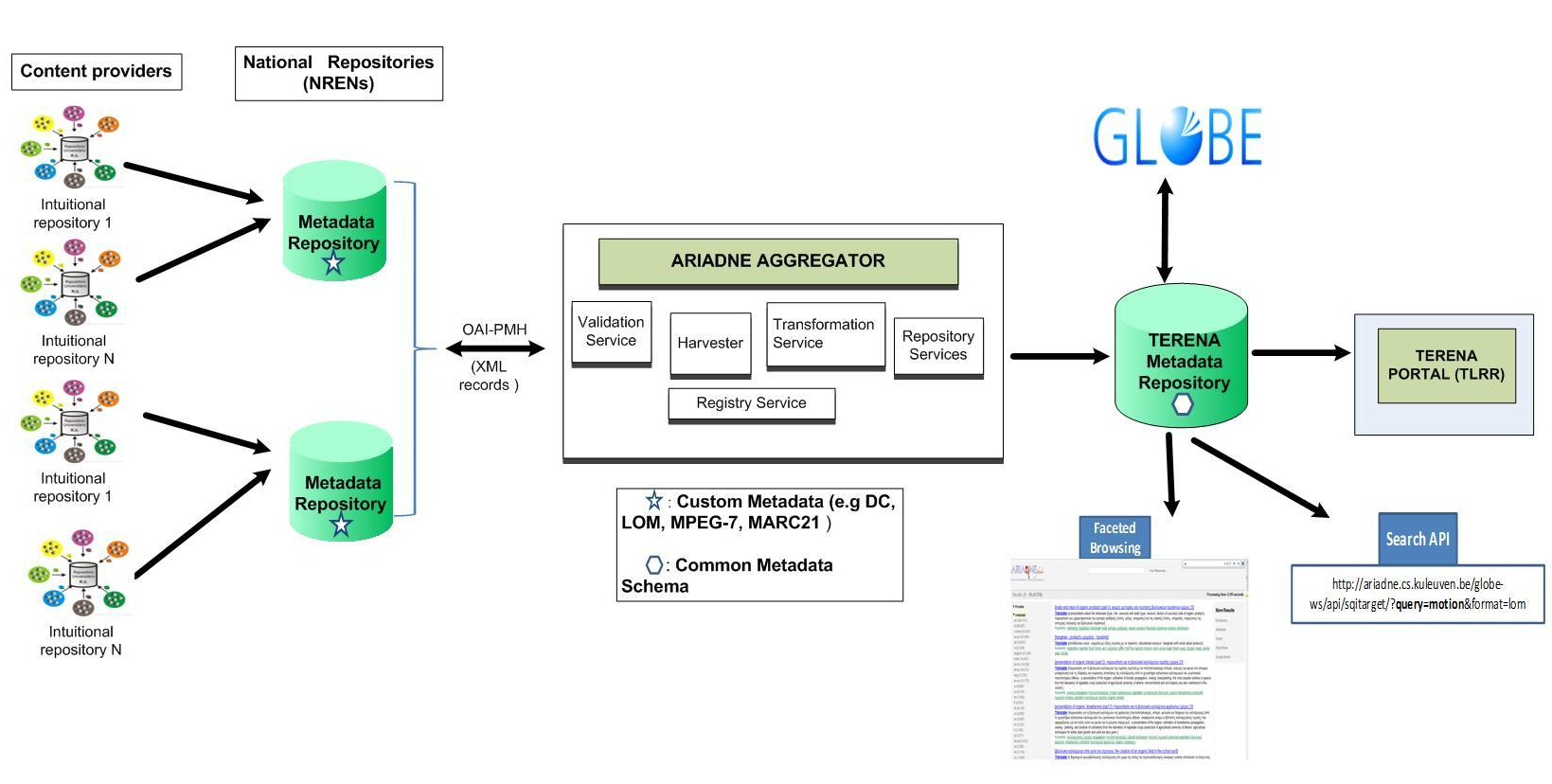...
There is a large interest around the world in establishing and maintaining national (as well as multi-national) learning object repositories as exemplified by the number of existing repositories, organizations building and sustaining them, contributors integrating learning objects in repositories, and users of these learning objects. The fundamental reasons are: the growing educational demands in all countries, the limited capacity of face to face education to fulfil fulfill the demand in a timely manner, the effort and cost involved to build multimedia learning materials, and the new possibilities offered by the Internet.
While it is a fact that millions of documents can be found on the Internet using search engines like Google, there is no guarantee that a query will lead to trustable material on which high quality education can be built. Not to mention copyright and licensing issues. Well managed learning object repositories that aggregate high quality content offer a solution to this problem.
Based on http://www.globe-info.org/
Objectives
Connecting the World and Unlocking the Deep Web - Create a one-stop-shop (broker) for national learning resource organizations, each of them managing and/or federating one or more learning object repositories within the country. TERENA OER portal initiative addresses the gap between the national repositories and the emerging global repositories (e.g., GLOBE) by establishing an European level metadata repository (i.e. aggregation point) for the national repositories acting in the R&E community. The primarily focus of the pilot is on audio-visual content repositories.
TERENA is willing to make TERENA makes a suite of online services and tools available to its members for the exchange of learning resources, and facilitates the access to the worldwide Open Community (i.e. GLOBE) guided by the following principles:
...
- More effective and motivating learning scenarios (learners & trainees).
- Better productivity and new philosophy of collaboration (authors of pedagogical material).
- Better communication and co-working schemes (researchers).
- Possible factor for harmonizing education & training policies throughout Europe.
- Spare public money by re-using open learning resources.
- NRENs' common face to global repositories (i.e. GLOBE)
The Pilot Project
1) TERENA implements an creates a European level, open source, metadata aggregation broker/portal (TLRR) that leaves the metadata content (i.e. the objects) in its source domain but grant access to and harvest the metadata from the higher level.the national level up to the pan-European level. The portal might be hosted and operated by one or more TERENA member organizations.
2) TF-Media defines the minimum requirements for a common metadata schema (e.g., 8 LOM fields) and the way how metadata can be harvested (e.g., OAI-PMH protocol)
3) Start collecting lectures’ metadata from the national repositories (primarily from NRENs participating in the pilot) and make them available via the TERENA portal.
4) TLRR applies for the GLOBE membership.
5) Potential service enhancements (e.g., Creative Common licensing), and value added components (e.g., integrated player, better user interface, representation of search targets).
Milestones, timing, etc. to be defined.
List of Potential Participants
- SWITCH (with SWITCHcast)
- FCCN (with Banco do Video)
- ISEP (with MELOR)
- RedIRIS (with ARCA)
- University of Vigo (…with DSpace)
- IUCC (MELORwith MAOR)
- NIIF (with Videotorium)
- GRENT (with Ariadne)
Q&A
Q: What can be the role of an NREN?
A: To bring the learning resources' information (metadata only, not the object itself) at the higher (i.e. nationalEuropean) level.
Q: Why should the national repository join TLRR (i.e. what is the additional value of TEREAN)?
A: To step from the national level to the Pan-European and later global (i.e. via GLOBE) level of aggregation. Create the critical mass.
Q: How can I convince lecturers to share their content?
A: Tell them not to share the whole lecture but just some chunks of it as a Learning Object. In return, they will be able to re-use LOs from other lecturers to enrich their presentation.Quality assured, licensed content.
Q: What is the actual Business Case for NRENs?
...
A: Using TLRR one can do deep search and find content that is most likely hided from Google Search or other web search engines.
Meeting minutes
1st VC Minutes (25 June 2012)
We've just had a very productive discussion about the practical steps of the TF-Media Open Educational Resource portal pilot.
...
I can say that we've kicked off the pilot with some initial agreements however, there are still many open questions and details that need to be clarified in the future. Stay tuned!
Here goes my quick notesNOTES:
25 June 2012 @ 14.00-15.45 CET. You can see the list of participants in the recording.
...
- Peter (TERENA) will follow up with IUCC, UVigo and GRNET on the test implementations and inform the mailing list about the progress.
DRAFT
DRAFTs
OPTION 2) In order to collect the metadata from the repositories participating in the pilot project the ARIADNE infrastructure and services (www.ariadne-eu.org/content/services) could be used.
2nd VC Minutes (21 September 2012)
We've just had an other very productive discussion about the practical steps of the TF-Media Open Educational Resource portal pilot. No recordings have been made.
NOTES
21 September 2012 @ 11.00-12.30 CET.
List of participants: Zenon, Nikos, Giannis (GRNET); Carlos (UPV); Vicente (UVigo); Eli (IUCC); Jack (TAU); Peter (TERENA)
